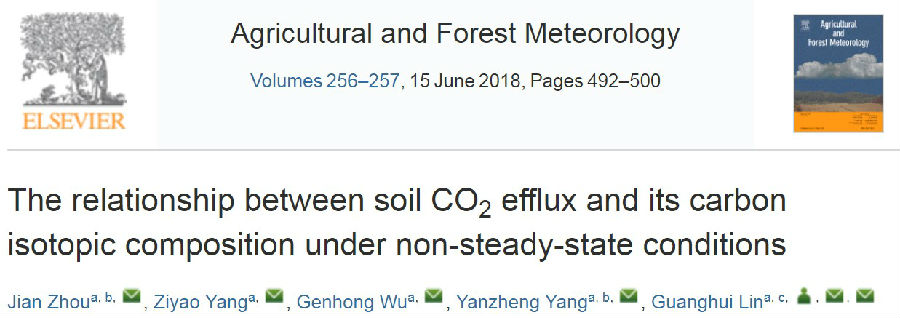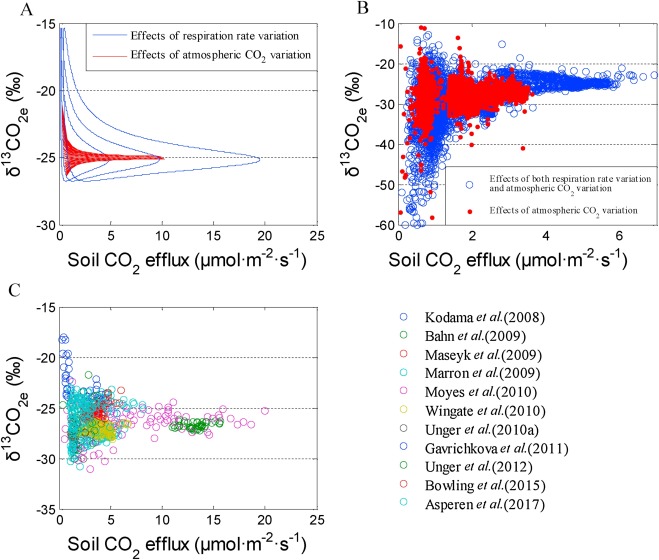Summary:The new research highlighted the effects of diffusive fractionation on the carbon isotope ratio of soil effluxed CO2under non-steady-state conditions.
Zhou Jian, a Ph. D. student majors in isotope ecology and theoretical ecology, led the research on carbon isotopic composition of soil respiration. The paper entitled “The relationship between soil CO2 efflux and its carbon isotope composition under non-steady-state conditions” was published online in Agricultural and Forest Meteorology on 19thApril, Professor Guanghui Lin serves as the corresponding author.

Soil CO2 efflux and its carbon isotopic composition are undoubtedly important for estimating ecosystem carbon budgets and for partitioning respiration sources at various spatial and temporal scales. Under natural conditions, non-steady processes will strongly influence the diffusive fluxes of13CO2and12CO2between soil and the atmosphere, which results in variations of effluxed soil δ13CO2and will lead to bias in respiration source partitioning. In this study, Jian Zhou and his collaborators present a set of quantitative relationships between soil CO2efflux and its δ13C by solving the diffusion equation. They showed that the effluxed δ13CO2converged toward the respiratory δ13CO2with an increasing efflux rate but that the values greatly differed at low efflux rates. With the isotope ratio infrared spectrometer (Delta Ray) provided by Thermo Fisher Scientific, they verified their theoretical results perfectly in the experimental tests. The data collected from the literature also confirmed the convergence pattern of the effluxed δ13CO2, which implies that most of the variations in the δ13C of soil effluxed CO2may derive from diffusive fractionation rather than from biological causes.

The convergence pattern ofδ13CO2under non-steady-state conditions。
The results explain the isotopic flux patterns of CO2under natural environmental variations and are vitally important for isotope-based modeling of ecosystem carbon exchange under changing climatic regimes.
Thermo Fisher Scientific provided strong support to this study, including a isotope ratio infrared spectrometer (free offered) and helpful assistants from several engineers.
Agricultural and Forest Meteorology is the top journal in the field ofagriculture and forest research. According to the Thomson Reuters Annual Report, the impact factor of "Agricultural and Forest Meteorology " for 2017 was 3.887.
Link:https://www.sciencedirect.com/science/article/pii/S0168192318301114